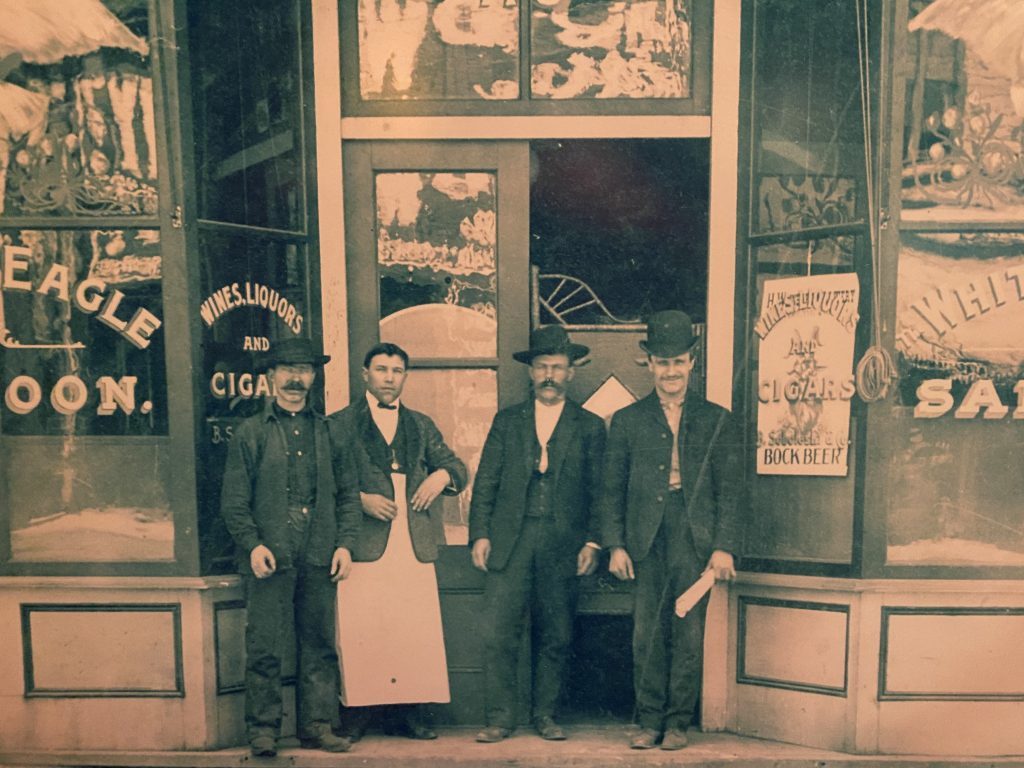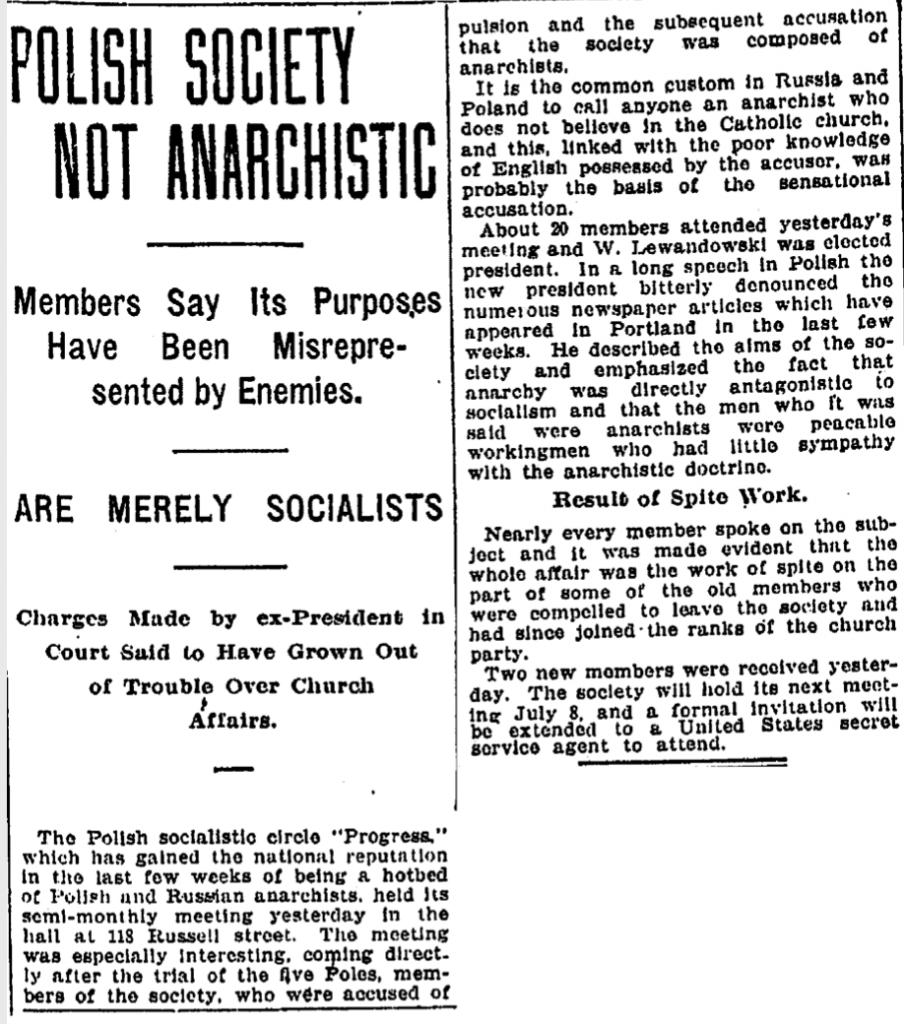
On Russell Street, the White Eagle Saloon has been serving drinks to the community of Portland since 1905. Today, the building stands a regular hot spot on the Eastside of Portland for musicians and travelers alike. Notably marked on the National Register of Historic Places, the building has acquired a set of ghost stories and tales that expands over a century. Polish immigrants, William Hryszko and Bronisław Sobolewski, opened the saloon with intent to help serve other Polish immigrants around them. Yet shortly after opening, the White Eagle Saloon garnished a reputation for itself that would endure a century later: as a puzzle piece of the past in the Albina district. Prostitutes, kidnappings and an opium den are some of the rumors circling what the building, possibly, could have hidden within the walls. The mysterious and mischievous past are never far behind us, and many who stay at the hotel today experience frequent paranormal activity. Stories surrounding the saloon aren’t soon to die, and neither are the spirits still roaming the grounds.

Shortly after opening, the White Eagle Saloon made headlines regarding who occupied the building and what it stood for. Multiple publications in the Oregonian helped to circulate rumors. The Saloon was thought to be an opium den, a brothel, the headquarters for an anarchist group or possibly all three combined. In June of 1906, press surrounding the White Eagle alerted the Secret Service to investigate the happenings within the saloon, believing the Polish members were planning to assassinate President Theodore Roosevelt. Although cleared after investigation, Portland natives were wary of the White Eagle Saloon after this press, which helped secure the saloon’s reputation on the mischievous side. Later that same June, the Oregonian printed an article clarifying that the White Eagle Saloon had, “been misrepresented by enemies”. (1) The Polish immigrants were often thought of as anarchists. Perhaps other members of the community saw them as violent members, as it was reported that many disturbances, such as beatings and brawls, occurred within the property. The Polish immigrants who came to Portland created a circle where they could retain their traditions and share their faith with other Poles. Many of these disturbances were due to politics or religion, as any Pole who did not believe in the Catholic Church was considered an anarchist (1) and one of the founders, Broinslaw “Barney” Sobolewski, was also the Minister of Justice on the Polish Cabinet (7). Regardless of the disturbances within the Polish community, the Saloon stood as meeting hall and refugee for Polish immigrants (3) where, “an immense emblem, a Polish eagle with the American and Polish flags underneath, occupies a prominent place on the wall.” (1)

The White Eagle underwent a remodel from a wooden structure to a brick building, and beginning in 1914 lodging was offered. The original intent Hryszko had to serve their Polish community proved true, as a census taken in 1920 showed that all the guests at the White Eagle were Polish men. (2) Although there is no substantial evidence to prove that the White Eagle Saloon was also a brothel along with the offered lodging, that is not to say that “working women”, or prostitutes, did not frequent the rooms available to rent on the second floor. Proof that prostitution existed in this way on the streets of Portland is shown in an Oregonian article from October of 1917. The article discusses cracking down on prostitution, and that the policy involves, “not only in eliminating regular houses of prostitution, but in checking the more or less clandestine class that walks the streets, and is apt to frequent lodging-houses and hotels”. (4) With Prohibition beginning in 1917, the saloon began to offer “soft drinks”, but it is largely eluded that regular activities were engaged in within.
Gritty stories surrounding shanghai-ing patrons and enslaved women in the basement have circled the saloon for decades, with little truth ever found behind them. Tim Hills, a historian who researched the origin of the White Eagle, clarified that, “the opening in the basement that is usually identified as the shanghai tunnel is actually a coal chute leading to a trap door in the front sidewalk”. (2) Not only this, but Shanghai activity decreased at the turn of the century, making those dark rumors difficult to believe – thankfully. Nevertheless, rumors of spirits from the shanghai tunnels continue to proliferate even as recently as to my last visit to the bar in late 2019. When asked about the haunted hotel the staff reported that several ghosts from the tunnels have been heard over the years.
It’s natural for a destination of this notoriety to be believed to be haunted. The White Eagle Saloon was a notable location for dozens over the decades, and the idea that spirits of the dead are still attached to the building is not a unique idea. There are a couple of prominent ghosts known to haunt the grounds, with other ghosts poking fun at current hotel guests. Recounting’s of the tales vary in dates, names and other details. With something as intangible as ghosts, these differences are bound to appear. It has been reported that a prostitute named Rose met an untimely fate within the walls of the saloon. The general tale is that Rose was a favored and frequent prostitute around the area, who was often at the White Eagle. Sadly, a customer happened to fall in love with her and schemed up a plan for the two of them to run away together. Hoping to convince her to run away with him, he met up with Rose one night, pleading with her to leave her life of prostitution. Rose refused his advances and chose to remain. In desperation and anger, whether she was pushed down the stairs or stabbed to death in her room, the man then killed Rose. Guests at the hotel reported having seen an apparition of a beautiful woman, with some experiencing the feeling of being touched while in their beds. (5) While the spirits of multiple prostitutes may be tied to the saloon, guests have been reported to experience a run-in with some sort of female energy. Local staff report that most of the activity is rumored to come out of Room #2 in the hotel where she allegedly frequently stayed.
Another prominent ghost is a man rumored to be named Sam Warrick. (6) The tale surrounding Sam is that he was born on the second floor, believed to be birthed by a prostitute. Orphaned at birth, Sam grew up in the White Eagle trading his services for room and board. It is reported that he was a bartender amongst other jobs at the White Eagle. The saloon would be his final resting place, as he never moved away and eventually passed away in his room. Some of his possessions are said to still be in the guest rooms, appearing to have been moved on their own. It’s told that Sam is one of the faces you can see in the old photographs hung upon the walls on the White Eagle, keeping a dutiful eye on his forever home.
A quick check on youtube has several paranormal investigators who have stayed at the hotel with various measurement tools. Their reports vary and some even report that room 3 has more paranormal activity than room 2. If you get the chance to walk the halls you will see why this hotel maintains such a vibrant haunted past. It is truly spooky in the hotel although it does maintain a warm vibe regardless of the low lighting, creaky stairs and stories of hauntings.
Perhaps it’s the spirits of Bronislaw Szelaszkewiez and William Hryszko that roam the halls, as their spirits are no doubt also tied to the White Eagle Saloon. Regardless of the truth, which many may never truly know, these tales that come from the White Eagle Saloon is an honor itself to the significance the building has had in Portland. The White Eagle Saloon has seen over a century of happenings occur within its brick walls, fluctuating between a safe haven for immigrants or a final meeting place for some souls. Spirits are still welcoming new guests, so feel free to book one of the original boarding rooms any night of the week and test it yourself. If you are brave enough perhaps add the Stanley hotel and Crescent hotel to your list as well, those are certainly on mine!
Oregon has several other haunted hotels also worth investigating including Hood River, Oregon’s Hood River Hotel and The Gorge Hotel.
Index
- Article: The Oregonian, June 25, 1906 “Polish Society Not Anarchists”
- Article: Hills, Tim. “Oregon Places: Myths and Anarchists: Sorting out the History of Portland’s White Eagle Saloon.” Oregon Historical Quarterly, vol. 101, no. 4, 2000, pp. 520–529. JSTOR, www.jstor.org/stable/20615097.
- Article: The Oregonian, “White Eagles True Story”, Sep 27,2001
- Article: The Oregonian, Oct 13, 1917, “Vice War Planned”
- Ghost Hunting Oregon by Donna Stewart
- Ghost Hunters Guide to Portland the Oregon Coast by Jeff Dwyer
- Article: “Journal of the American-Polish Chamber or Commerce and Industry June/July 1921”

Tritone’s love of horror and mystery began at a young age. Growing up in the 80’s he got to see some of the greatest horror movies play out in the best of venues, the drive-in theater. That’s when his obsession with the genre really began—but it wasn’t just the movies, it was the games, the books, the comics, and the lore behind it all that really ignited his obsession. Tritone is a published author and continues to write and write about horror whenever possible.
